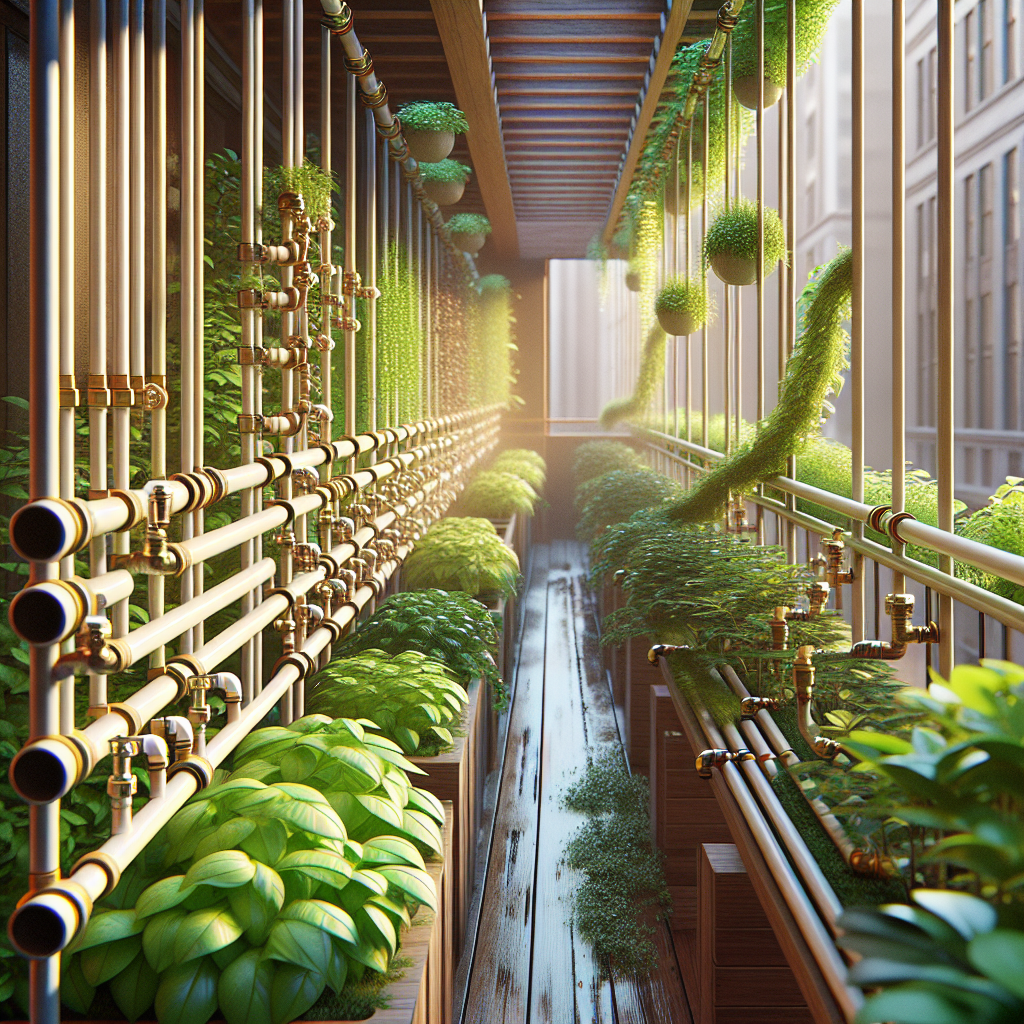Urban gardening is becoming increasingly popular as more people seek to grow their own food and create green spaces in the concrete jungle. However, one of the biggest challenges urban gardeners face is finding the time and resources to water their plants regularly. This is where a DIY slow drip irrigation system can come in handy.
A slow drip irrigation system is a method of watering plants that delivers water directly to the roots at a slow and steady pace. This ensures that your plants receive just the right amount of water they need, without any wastage or runoff. It also helps to conserve water and reduce the risk of overwatering, which can lead to root rot and other issues.
In this article, we will guide you through the process of creating your own DIY slow drip irrigation system for your urban garden. With just a few simple materials and some basic tools, you can set up an efficient watering system that will keep your plants healthy and thriving all year round.
Materials needed:
– A large plastic container with a lid
– Plastic tubing (approx. 1/4 inch diameter)
– Drip emitters
– Hose clamps
– Drill with 1/4 inch drill bit
– Scissors
– Water
Step 1: Prepare the container
Start by selecting a large plastic container with a lid that can hold enough water to irrigate your entire garden. Drill a series of small holes in the bottom of the container using a 1/4 inch drill bit. These holes will allow water to drip out slowly and evenly.
Step 2: Install drip emitters
Attach drip emitters to one end of the plastic tubing using hose clamps. The number of drip emitters you will need depends on the size of your garden and how many plants you have. Place the drip emitters at regular intervals along the length of the tubing, making sure they are evenly spaced out.
Step 3: Connect tubing to container
Insert the other end of the plastic tubing through one of the holes in the lid of the plastic container. Secure it in place with a hose clamp to prevent any leaks. Cut off any excess tubing if necessary.
Step 4: Position tubing in garden
Lay out the plastic tubing in your garden, positioning it close to the base of each plant or row of plants. Make sure that there are no kinks or bends in the tubing that could restrict water flow.
Step 5: Fill container with water
Fill up the plastic container with water until it reaches just below the level of the holes drilled in step 1. Place the lid back on top to prevent evaporation and contamination.
Step 6: Test irrigation system
Turn on your DIY slow drip irrigation system and check that water is flowing evenly from each drip emitter. Adjust any drippers that are not working properly or are dripping too fast or too slow.
Step 7: Adjust watering schedule
Monitor your plants regularly to ensure they are receiving enough water from your new irrigation system. If you notice any signs of wilting or dehydration, adjust your watering schedule accordingly by increasing or decreasing frequency as needed.
Benefits of DIY slow drip irrigation system:
1. Water conservation – By delivering water directly to plant roots at a controlled rate, a slow drip irrigation system helps reduce water wastage and promotes efficient use of this precious resource.
2. Healthier plants – Consistent watering prevents under-watering or overwatering, which can stress plants and make them more susceptible to diseases and pests.
3. Time-saving – Once set up, a DIY slow drip irrigation system requires minimal maintenance and monitoring, freeing up more time for other gardening tasks.
4. Cost-effective – Creating your own slow drip irrigation system is much cheaper than buying pre-made systems from store-bought brands.
5.Easy customization – You can easily adjust your DIY slow drip irrigation system based on factors like plant type, soil moisture levels, weather conditions, etc., ensuring optimal growth for all your garden plants.
In conclusion, setting up a DIY slow drip irrigation system for your urban garden is an excellent way to ensure that your plants receive sufficient hydration without wasting valuable resources like time and money on frequent manual watering methods.Creating this simple yet effective solution provides numerous benefits not only for plant health but also for sustainability practices within urban gardening environments.It’s an easy project for even beginners which has long-lasting benefits for both plant life as well as overall environmental conservation efforts within city settings.So why not give it try? Start building yours today!













